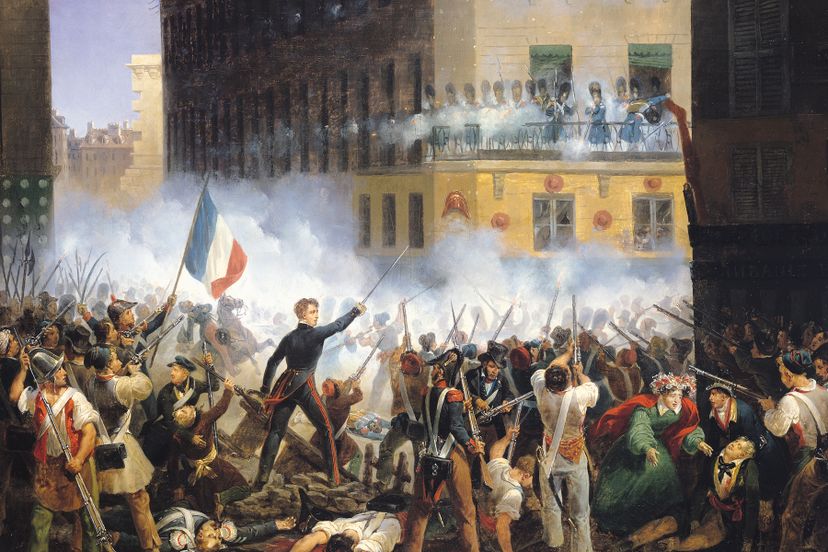
About This Quiz
It is often called a turning point in the history of humankind, sowing the seeds for democracy and freedom for individuals. How much do you know about the French Revolution?A good chunk of that debt was incurred during France's support of the American Revolution.
The common people decided that the first and second estates had become unnecessary to the well-being of regular citizens.
The Bastille was a symbol of the doomed monarchy and its fall encouraged protesters throughout France.
Advertisement
More importantly, it was a very visible reminder of the monarchy, and it was right in the center of Paris.
Only one defender died; the lopsided body count was probably attributable to the fact that the soldiers were protected by the fortress.
He was caught disguised as a servant while trying to escape the country.
Advertisement
Most of these men were poorer clergy, but about 10% were noblemen who had significant power in society.
Rich people were worried that the peasants were going to rise against them; poor people feared that aristocrats would do anything to stop the revolution.
The National Assembly declared that feudalism was abolished, instantly making French nobility worried for their futures and their lives.
Advertisement
Years of drought had ruined the food supply, another factor in the revolution.
They made up less than 2% of the population and their outsized power made them targets of the revolutionaries.
But without any sort of organized system of justice, many people were rounded up and murdered for no good reason.
Advertisement
Many others rotted away in prison without ever receiving any kind of trial.
As a preemptive action, the revolutionaries simply murdered them.
There were no appeals; the Tribunal commonly sentenced people (many innocent) to death by guillotine.
Advertisement
Until the revolution, generation after generation of French citizens had been subjected to royal whims.
The revolutionaries were not afraid to express their rage in heinous ways.
The constitution didn't go far enough for many revolutionaries, who immediately set about looking for ways to further strip the monarchy's powers.
Advertisement
Instead of striking fear into the hearts of revolutionaries, it further stoked their desire to destroy the monarchy.
Many historians believe that he helped increase the violent excesses of the Reign of Terror.
This tool of execution became a feared symbol of the revolution as a whole; it was used to kill both aristocrats and common people.
Advertisement
It wasn't until 1981 that France finally outlawed capital punishment and put the guillotine away for good.
Political corruption turned the organization inside out and it gradually lost power to the military.
Their persistence paid off, and within a week the king was forced to address their concerns.
Advertisement
The Mountain (or the Montagnards) were an extremist group within the revolution that in some cases took drastic actions.
The Reaction strove to stop the insanity of the Reign of Terror, creating a calmer environment for the restructuring of society.
It has since become a symbol for human and civil rights movements all over the world.
Advertisement
Jefferson's steadfast ideals and wisdom helped shape the declaration, which in turn influenced generations of freedom-loving people.
He was executed in early 1793, a permanent end to his reign.
Napoleon established the Consulate and then the First Empire, and he was the indisputable leader.
Advertisement